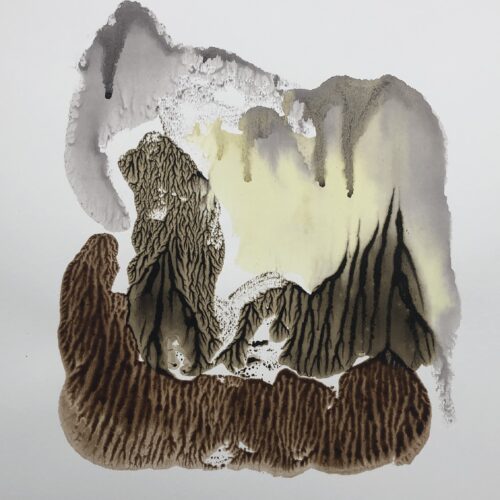
Women’s History Month: Aemilia Lanyer
Since March is Women’s History Month it seems like a good time to celebrate the work of women writers from an earlier age. Fortuitously, as joint editor of NAWE’s Higher Education Journal, Writing in Practice No 5, (to be published in the summer of 2019) I read an article by Sally O’Reilly analysing her approach to writing a historical novel, Dark Aemelia, (Myriad Editions, 2015) about Shakespeare and his relationship with Aemilia Lanyer, a contemporary poet, and a possible identity for the Dark Lady of his sonnets.
Aemilia Lanyer (1569 to 1645) may or may not have been the Dark Lady – it was A..L. Rowse who first came up with the suggestion as far back as 1973 – but she was certainly a poet in her own right. She was the daughter of a Venetian Jewish musician, Antonio Bassano, who had come to London at the invitation of Henry VIII. Jews at that time could not enter England legally and so he would have pretended to have converted to Christianity – those who did were known as conversos – and since Aemilia’s mother was a Christian, Aemilia would have only been able to learn Hebrew and practice Judaism in secret with members of her father’s family.
Since reading O’Reilly’s article and her novel I have come across several more novels based on her life, positing she may have suggested both characters and ideas in Shakespeare’s plays, with even the possibility she might have written some of the plays: Dark Lady by Michael Baldwin (Abacus 1999), The Dark Lady’s Mask by Mary Sharratt, (Houghton Mifflin Harcourt New York 2016) and Dark Lady by Charlene Ball (She Writes Press Berkeley Ca. 2017). And in 2018 Aemilia Lanyer became the subject of a play by Morgan Lloyd Malcolm first at the Globe Theatre and now in March 2019 at the Vaudeville with an all female, almost all black cast, giving the dark lady’s darkness a more modern meaning.
https://www.google.com/search?q=morgan+lloyd+malcolm&oq=Morgan+LLoyd+Malcolm&aqs=chrome.0.0l6.9080j0j7&sourceid=chrome&ie=UTF-8
As for the influence on Shakespeare, go to Othello, look at the speeches of Iago’s wife, Emilia, (Aemilia?) where strong proto-feminist ideas appear, or the fact that Shakespeare was agreeable to John Fletcher writing a sequel to The Taming of the Shrew called The Tamer Tamed, where Kate has her revenge on Petruchio. O’Reilly suggests that Macbeth was originally to be called the Tragedy of Lady Macbeth and might have been the work of Lanyer. Perhaps the best researched and argued case for Lanyer as the playwright herself is John Hudson’s book where he argues that Lanyer is really the only person who could have known the Hebrew and Italian references and the all the musical ones which appear in the plays. She actually experienced a storm at sea (The Tempest) on her way to Denmark and a visit to Elsinore (Hamlet) and her father’s family came from Bassano (where one of the local shopkeepers was called Otello) and Venice.
This may all sound as if Aemilia Lanyer is more famous for being written about than for writing. So forget all the novels, and especially if you were about to write a dark lady novel, play or poem yourself, and go to her poem, Salve Deus Rex Judaeorum published in 1611 and dedicated to several other women writers and women patrons. The dedications are part of the poem itself, praising women as writers and critics, while another section is an apology for Eve or rather an exoneration of Eve, laying the blame for the exodus from paradise on Adam. There is also a section on the passion of Christ and so one critic, Suzanne Trill, sees Lanyer as not so much performing a feminist task, but as professing her protestant faith. I’m not so sure about this and I would argue that Lanyer is performing a protestant task, but is actually professing her Jewish faith (which of course, she could not do openly) and her faith in the power of women. And curiously, these two beliefs go hand in hand.
This claim is based on the imagery used by Lanyer which comes not only from the Old Testament Song of Songs but also from the Zohar which is part of medieval Jewish writing in the Kabalah, which praises women for being the origin of all human life, and recognises the female spirit within God known as Shekhinah. It is this recognition of the power of women in language and belief systems that led Ed Simon, an American critic, to see Lanyer as the first female, English, Jewish poet. (https://www.tabletmag.com/jewish-arts-and-culture/books/200521/amelia-lanyer-english-poet). So while Lanyer’s poem looks as if it is a defence of Christianity, it could be argued that it is actually a plea for the power of women and shows her using the imagery within the Kabalah and Jewish prayers in general to support that plea. Here are a few lines from Lanyer’s poem where the “his” refers to God showing imagery from the Song of Songs and the Kabalah.
“Black as a Raven in her blackest hew;
His lips like scarlet threads, yet much more sweet
Than is the sweetest honey dropping dew,
Or honey combs, where all the Bees doe meet.”
So much for Lanyer’s imagery but she also makes a direct plea in defence of Eve: “Yet surely Adam cannot be excused/Her fault though great, yet hee was most too blame/…..………Being lord of all, the greater was his shame.” And a few lines later she addresses men in general:
You came not in the world without our paine,
Make that a barre against your crueltie;
Your fault beeing greater, why should you disdaine
Our beeing your equals, free from tyranny?” (Lanyer1611:1993 p.83-4)
Maybe in another 400 years?
Hudson, John, Shakespeare’s Dark Lady: Amelia Bassano Lanier: The Woman Behind Shakespeare’s Plays? (Stroud: Amberley Publishing, 2014).
Lanyer, Aemilia in Suzanne Woods ed. (1993) The Poems of Aemilia Lanyer, Oxford University Press, Oxford





